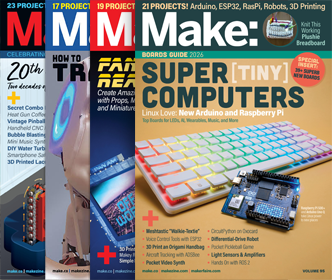Controlling a Parallel Port with Perl
 I was looking for something else, but then found this and figured it might come in handy for something- here’s how to control the parallel port with Perl using a module called Device:ParallelPort. Device::ParallelPort is a Perl API that allows low level access to the parallel port of most computers. It does this by using a number of drivers, which can be customized and added to, including Linux (direct and parport), Win32, Script, Dummy, and more. It also contains a number of direct access devices including an example printer and a relay controller card. Link.
I was looking for something else, but then found this and figured it might come in handy for something- here’s how to control the parallel port with Perl using a module called Device:ParallelPort. Device::ParallelPort is a Perl API that allows low level access to the parallel port of most computers. It does this by using a number of drivers, which can be customized and added to, including Linux (direct and parport), Win32, Script, Dummy, and more. It also contains a number of direct access devices including an example printer and a relay controller card. Link.




 Clever! I wonder if this would allowed on a plane. This is a tale of my new daily-use computer. It’s a full-function pc, running Windows XP Pro, with an amd athlon xp 3200+ cpu, 768 mb of ram, 3 monitor ports, plenty of usb ports, and a built in 10/100 switch. And it’s a suitcase. It has a handle. It has two latches. I take it to work with me every day, and take it home every night. All it doesn’t have is a CD Drive. Here is its story. Thanks Chris!
Clever! I wonder if this would allowed on a plane. This is a tale of my new daily-use computer. It’s a full-function pc, running Windows XP Pro, with an amd athlon xp 3200+ cpu, 768 mb of ram, 3 monitor ports, plenty of usb ports, and a built in 10/100 switch. And it’s a suitcase. It has a handle. It has two latches. I take it to work with me every day, and take it home every night. All it doesn’t have is a CD Drive. Here is its story. Thanks Chris! 
 In the Make photo pool Adam Thornton posted a really cool how to on making a 20th century cocktail. Besides it being a useful step by step, Adam used the Comic Maker application “Comic Life” from
In the Make photo pool Adam Thornton posted a really cool how to on making a 20th century cocktail. Besides it being a useful step by step, Adam used the Comic Maker application “Comic Life” from 
 Here’s a really cool way to make a list of movies and books that are most popular among the people who are connected to you at Google’s Orkut. The author describes how he used Perl to construct a list of movies and books that are cited most in the profiles of the people who are at a maximum distance of 2 from him on Orkut. Having such a tool handy offers an interesting way to discover popular movies and books. I wish all social networking sites had this and NetFlix queues.
Here’s a really cool way to make a list of movies and books that are most popular among the people who are connected to you at Google’s Orkut. The author describes how he used Perl to construct a list of movies and books that are cited most in the profiles of the people who are at a maximum distance of 2 from him on Orkut. Having such a tool handy offers an interesting way to discover popular movies and books. I wish all social networking sites had this and NetFlix queues. 
 Here’s how you change the Phone Book Widget on Apple’s new Mac OS X Tiger to use Google Maps instead- Hes Nikke on macoshints says…“Mapquest is an aging mapping system and doesn’t fit in with the new shinyness in Tiger. Thats why I made the phone book widget use Google Maps instead”.
Here’s how you change the Phone Book Widget on Apple’s new Mac OS X Tiger to use Google Maps instead- Hes Nikke on macoshints says…“Mapquest is an aging mapping system and doesn’t fit in with the new shinyness in Tiger. Thats why I made the phone book widget use Google Maps instead”. 
 On Friday’s
On Friday’s 
 Mac OS X Tiger is out today, so that means we’re going to see a ton of really neat widgets, if you want to get started building here’s an overview…Based on Web Kit technologies, Dashboard Widgets are created using a mix of HTML, JavaScript, and CSS. This extends the ability to develop Widgets to a very wide audience. If you know how to create a web page, then you know how to create a capable Widget.
Mac OS X Tiger is out today, so that means we’re going to see a ton of really neat widgets, if you want to get started building here’s an overview…Based on Web Kit technologies, Dashboard Widgets are created using a mix of HTML, JavaScript, and CSS. This extends the ability to develop Widgets to a very wide audience. If you know how to create a web page, then you know how to create a capable Widget. 